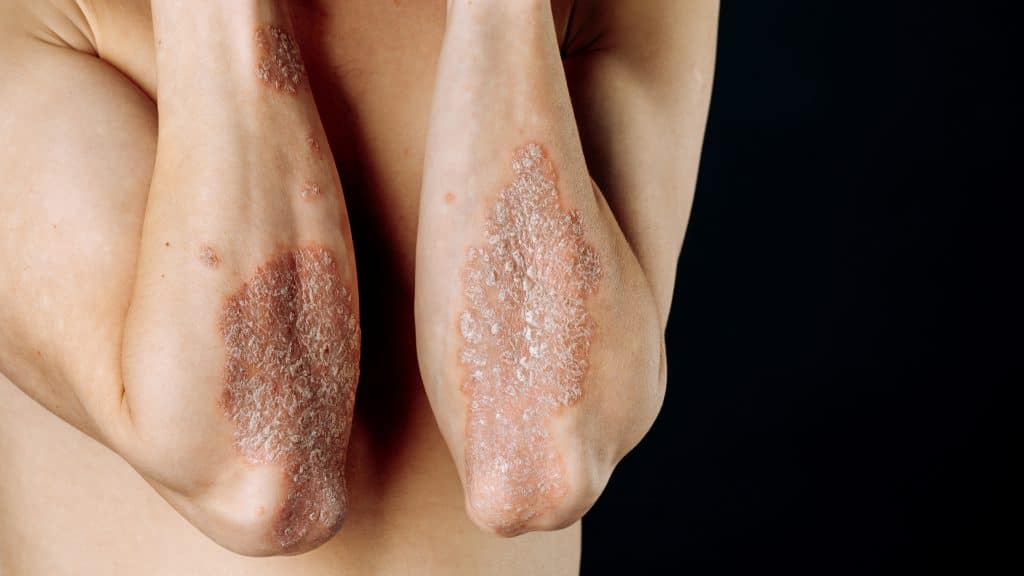There are many common health symptoms that may indicate serious problems. However, many people think that as long as they aren’t currently suffering from chronic illness or disease, they are perfectly healthy. The truth is that there are many subtle signs and symptoms that can indicate an underlying health issue. Let’s discuss some of the common health symptoms that are a sign you may not be as healthy as you think.
Constant Fatigue And Lack Of Energy
Fatigue and lack of energy are two common health symptoms that often indicate a variety of underlying health issues. While it is normal to feel tired after a long day or when you are sick, persistent feelings of fatigue and low energy levels may be a sign that something more serious is going on.
There are several potential causes for constant fatigue and lack of energy, including physical conditions, psychological factors, and lifestyle choices. Some common physical causes include anemia, thyroid disorders, and sleep disorders such as insomnia or sleep apnea. Psychological factors like stress, depression, and anxiety can also contribute to feelings of fatigue and low energy.1 2 3 4 5
There are certain lifestyle habits that can also result in constant fatigue and lack of energy. These include a poor diet, lack of exercise, excessive alcohol or caffeine consumption, and not getting enough restorative sleep. If you find yourself constantly feeling tired and low on energy even after getting enough rest, it may be a sign that your body is struggling to function properly.
Frequent Headaches And Body Aches
Headaches and body aches are caused by a variety of factors, including stress, poor posture, dehydration or underlying health conditions such as fibromyalgia. If you are experiencing these symptoms on a regular basis without any apparent reason, it could be an indication that your body is not in its optimal state.
Headaches are one of the most common health complaints, with almost everyone experiencing them at some point in their lives. While the occasional headache is usually nothing to worry about, frequent headaches can indicate an underlying health issue. Some common causes of frequent headaches include tension headaches, migraines, and even high blood pressure.6 7 8
Similarly, body aches are also quite common and can be caused by physical strain, overexertion, or even the flu. However, if you find yourself experiencing body aches on a regular basis, it could be a sign of an underlying health problem. Chronic body aches can often be attributed to conditions such as fibromyalgia and autoimmune disorders.9 10

Digestive Problems
One of the most common signs of a digestive problem is abdominal pain or discomfort. This can range from mild discomfort to severe cramps, and it may be accompanied by bloating or gas. It is essential to pay attention to the location of the pain as different areas of the abdomen can indicate different issues within the digestive system.
Digestive issues like bloating, constipation, diarrhea, or abdominal pain can be signs of an unhealthy gut. Poor diet, stress and underlying health conditions such as irritable bowel syndrome (IBS) can all contribute to these problems.11
If you experience chronic constipation or diarrhea, it could be a sign that your digestive system is not functioning properly. Both of these symptoms can be caused by digestive disorders like inflammatory bowel disease (IBD).12
Another red flag for digestive problems is heartburn or acid reflux. This occurs when stomach acid flows back up into the esophagus, causing a burning sensation in the chest. If this happens frequently, it can lead to gastroesophageal reflux disease (GERD), which can cause damage to the esophagus over time.13
Changes In Skin Appearance
Skin is the largest organ in our body and it serves as a protective barrier against external threats. As such, any changes in its appearance can be an indication of underlying health issues. Here are some common skin symptoms that may indicate that you are not as healthy as you should be.
Pale or yellowish skin may be a sign of anemia, a condition where your body lacks red blood cells or hemoglobin. This can be caused by various factors such as nutrient deficiencies, chronic diseases, or medications.14
Yellowing of the skin can also be a sign of liver problems. This condition occurs when there is a buildup of bilirubin, a yellow pigment produced by the liver. Jaundice can be caused by various factors such as viral hepatitis and liver disease.15
Dry and flaky skin can be caused by a variety of factors, including dehydration, harsh weather conditions, or skin disorders such as eczema or psoriasis. Dry skin can also indicate a deficiency in essential fatty acids or vitamins. On a more serious note, dry skin can be a sign of an underlying health issue such as thyroid problems.16 17
Rashes or itchy skin can be a result of an allergic reaction to certain foods, medications, or environmental factors. However, if the rashes and itchiness persist for a prolonged period of time, it may be a sign of an underlying health condition such as eczema, psoriasis, or autoimmune disorders.18
Excessive hair growth in women, especially on the face and body, can be a sign of hormonal imbalances such as polycystic ovary syndrome (PCOS). This condition can also cause other symptoms such as irregular periods, weight gain, and acne.19
Dark patches on the skin are often a sign of various health issues such as hormonal imbalances or adrenal gland disorders. These dark patches may appear on different parts of the body and are usually accompanied by other symptoms such as weight gain, fatigue, and mood changes.20 21

Losing Hair From The Outer Portion Of Your Eyebrows
The outer portion of your eyebrows is a part of your face that often goes unnoticed. However, it can reveal important information about your health. Losing hair from the outer portion of your eyebrows may be a sign of an underlying health issue.
In most cases, losing hair from the outer portion of your eyebrows is not something to worry about as it could simply be due to aging or over-plucking. However, if you notice a sudden and significant thinning of hair from this area, it could be an indication of a thyroid disorder.
The thyroid gland plays a crucial role in regulating various bodily functions including metabolism and hair growth. When the thyroid gland is not functioning properly, it can result in hair loss from the outer portion of your eyebrows as well as other areas of your body.24
Another possible cause is alopecia areata, an autoimmune disorder that leads to patchy hair loss. This condition occurs when the immune system attacks hair follicles, resulting in hair loss on the scalp and other areas including the outer portion of the eyebrows.25
Losing hair from the outer portion of your eyebrows can also be a sign of nutrient deficiency. In particular, a lack of omega-3 and omega-6 fatty acids have been linked to eyebrow hair loss. Ensuring that you have a balanced and nutritious diet can help prevent this type of hair loss.26
In addition to these potential causes, there are also lifestyle factors that can contribute to losing hair from the outer portion of your eyebrows. These include excessive stress, smoking, and certain medications. Making positive changes in your lifestyle such as reducing stress levels and quitting smoking can help improve the health of your eyebrows.27
Mucus Coating On Tongue
The appearance and texture of our tongue gives us important clues about our overall health. One common sign that your body may not be functioning at its best is the presence of a mucus coating on your tongue.
Mucus, also known as phlegm, is a thick, sticky substance that lines various parts of our bodies such as the nose, throat, and mouth. It helps to protect these areas from foreign particles, bacteria, and viruses.
When it comes to our tongue, a thin layer of mucus is normal and healthy. However, an excess amount or thick coating can indicate that something may be off balance in our bodies.
Our bodies need water to function properly, and when we are dehydrated, it can affect various parts of our body including the tongue. Lack of adequate hydration can cause a dry mouth which can lead to an increase in mucus production.28
Oral thrush is a fungal infection caused by the overgrowth of Candida albicans in the mouth. It can cause a thick white coating on the tongue, which is often accompanied by redness and discomfort.29
Candida overgrowth is a condition where there is an excessive amount of the fungus Candida albicans in the body. Normally, Candida exists in small amounts in our gut and mouth without causing harm. However, when there is an imbalance in the microbiome, it can grow out of control and cause an infection. This overgrowth can lead to symptoms such as fatigue, brain fog, digestive issues, and more.30
There are several factors that can contribute to microbiome disruption, including a diet high in sugar and processed foods, prolonged use of antibiotics, stress, and a weakened immune system. These factors alter the microbiome’s diversity and often lead to an overgrowth of candida.
Improving the microbiome can be done through dietary changes, such as increasing consumption of probiotic-rich foods and fiber-rich foods.31
Large Belly
A large belly can be an indicator of several underlying health issues. A large belly may also be a sign of high levels of visceral fat, which surrounds organs and can lead to insulin resistance and inflammation.32

Common health symptoms, such as fatigue, headaches or digestive issues, can often indicate underlying health conditions that need to be addressed. By recognizing these warning signs and taking action early on, we can prevent more serious health problems in the future. Taking care of our health should be a priority, and listening to our bodies is the first step towards achieving overall well-being.
Read more about consuming a healthy diet.
References
1 Turner J, Parsi M, Badireddy M. Anemia. [Updated 2023 Aug 8]. In: StatPearls [Internet]. Treasure Island (FL): StatPearls Publishing; 2023 Jan-. Available from: https://www.ncbi.nlm.nih.gov/books/NBK499994/
2 Fischer S, Markert C, Strahler J, Doerr JM, Skoluda N, Kappert M, Nater UM. Thyroid Functioning and Fatigue in Women With Functional Somatic Syndromes – Role of Early Life Adversity. Front Physiol. 2018 May 23;9:564. doi: 10.3389/fphys.2018.00564. PMID: 29875680; PMCID: PMC5974249.
3 Krystal AD, Prather AA, Ashbrook LH. The assessment and management of insomnia: an update. World Psychiatry. 2019 Oct;18(3):337-352. doi: 10.1002/wps.20674. PMID: 31496087; PMCID: PMC6732697.
4 Abbasi A, Gupta SS, Sabharwal N, Meghrajani V, Sharma S, Kamholz S, Kupfer Y. A comprehensive review of obstructive sleep apnea. Sleep Sci. 2021 Apr-Jun;14(2):142-154. doi: 10.5935/1984-0063.20200056. PMID: 34381578; PMCID: PMC8340897.
5 Kocalevent RD, Hinz A, Brähler E, Klapp BF. Determinants of fatigue and stress. BMC Res Notes. 2011 Jul 20;4:238. doi: 10.1186/1756-0500-4-238. PMID: 21774803; PMCID: PMC3148561.
6 Shah N, Hameed S. Muscle Contraction Tension Headache. [Updated 2023 Jul 16]. In: StatPearls [Internet]. Treasure Island (FL): StatPearls Publishing; 2023 Jan-. Available from: https://www.ncbi.nlm.nih.gov/books/NBK562274/
7 Pescador Ruschel MA, De Jesus O. Migraine Headache. [Updated 2023 Aug 23]. In: StatPearls [Internet]. Treasure Island (FL): StatPearls Publishing; 2023 Jan-. Available from: https://www.ncbi.nlm.nih.gov/books/NBK560787/
8 Arca KN, Halker Singh RB. The Hypertensive Headache: a Review. Curr Pain Headache Rep. 2019 Mar 14;23(5):30. doi: 10.1007/s11916-019-0767-z. PMID: 30874912.
9 Siracusa R, Paola RD, Cuzzocrea S, Impellizzeri D. Fibromyalgia: Pathogenesis, Mechanisms, Diagnosis and Treatment Options Update. Int J Mol Sci. 2021 Apr 9;22(8):3891. doi: 10.3390/ijms22083891. PMID: 33918736; PMCID: PMC8068842.
10 Biscetti L, De Vanna G, Cresta E, Corbelli I, Gaetani L, Cupini L, Calabresi P, Sarchielli P. Headache and immunological/autoimmune disorders: a comprehensive review of available epidemiological evidence with insights on potential underlying mechanisms. J Neuroinflammation. 2021 Nov 8;18(1):259. doi: 10.1186/s12974-021-02229-5. PMID: 34749743; PMCID: PMC8573865.
11 Patel N, Shackelford KB. Irritable Bowel Syndrome. [Updated 2022 Oct 30]. In: StatPearls [Internet]. Treasure Island (FL): StatPearls Publishing; 2023 Jan-. Available from: https://www.ncbi.nlm.nih.gov/books/NBK534810/
12 McDowell C, Farooq U, Haseeb M. Inflammatory Bowel Disease. [Updated 2023 Aug 4]. In: StatPearls [Internet]. Treasure Island (FL): StatPearls Publishing; 2023 Jan-. Available from: https://www.ncbi.nlm.nih.gov/books/NBK470312/
13 Antunes C, Aleem A, Curtis SA. Gastroesophageal Reflux Disease. [Updated 2023 Jul 3]. In: StatPearls [Internet]. Treasure Island (FL): StatPearls Publishing; 2023 Jan-. Available from: https://www.ncbi.nlm.nih.gov/books/NBK441938/
14 Joseph A, Samant H. Jaundice. [Updated 2023 Aug 8]. In: StatPearls [Internet]. Treasure Island (FL): StatPearls Publishing; 2023 Jan-. Available from: https://www.ncbi.nlm.nih.gov/books/NBK544252/
15 Stillman AE. Jaundice. In: Walker HK, Hall WD, Hurst JW, editors. Clinical Methods: The History, Physical, and Laboratory Examinations. 3rd edition. Boston: Butterworths; 1990. Chapter 87. Available from: https://www.ncbi.nlm.nih.gov/books/NBK413/
16 Pons-Guiraud A. Dry skin in dermatology: a complex physiopathology. J Eur Acad Dermatol Venereol. 2007 Sep;21 Suppl 2:1-4. doi: 10.1111/j.1468-3083.2007.02379.x. PMID: 17716284.
17 Silva TS, Faro GBA, Cortes MGB, Rego VRPA. Primary hypothyroidism with exuberant dermatological manifestations. An Bras Dermatol. 2020 Nov-Dec;95(6):721-723. doi: 10.1016/j.abd.2019.07.010. Epub 2020 Mar 19. PMID: 32482552; PMCID: PMC7672398.
18 Lu Z, Zeng N, Cheng Y, Chen Y, Li Y, Lu Q, Xia Q, Luo D. Atopic dermatitis and risk of autoimmune diseases: a systematic review and meta-analysis. Allergy Asthma Clin Immunol. 2021 Sep 25;17(1):96. doi: 10.1186/s13223-021-00597-4. PMID: 34563251; PMCID: PMC8467008.
19 Witchel SF, Oberfield SE, Peña AS. Polycystic Ovary Syndrome: Pathophysiology, Presentation, and Treatment With Emphasis on Adolescent Girls. J Endocr Soc. 2019 Jun 14;3(8):1545-1573. doi: 10.1210/js.2019-00078. PMID: 31384717; PMCID: PMC6676075.
20 Lause M, Kamboj A, Fernandez Faith E. Dermatologic manifestations of endocrine disorders. Transl Pediatr. 2017 Oct;6(4):300-312. doi: 10.21037/tp.2017.09.08. PMID: 29184811; PMCID: PMC5682371.
21 Raj R, Elshimy G, Mishra R, Jha N, Joseph V, Bratman R, Tella SH, Correa R. Dermatologic Manifestations of Endocrine Disorders. Cureus. 2021 Sep 27;13(9):e18327. doi: 10.7759/cureus.18327. PMID: 34692360; PMCID: PMC8526081.
22 Bosch X, Monclús E, Escoda O, Guerra-García M, Moreno P, Guasch N, López-Soto A. Unintentional weight loss: Clinical characteristics and outcomes in a prospective cohort of 2677 patients. PLoS One. 2017 Apr 7;12(4):e0175125. doi: 10.1371/journal.pone.0175125. PMID: 28388637; PMCID: PMC5384681.
23 Caio G, Volta U, Sapone A, Leffler DA, De Giorgio R, Catassi C, Fasano A. Celiac disease: a comprehensive current review. BMC Med. 2019 Jul 23;17(1):142. doi: 10.1186/s12916-019-1380-z. PMID: 31331324; PMCID: PMC6647104.
24 Hussein RS, Atia T, Bin Dayel S. Impact of Thyroid Dysfunction on Hair Disorders. Cureus. 2023 Aug 10;15(8):e43266. doi: 10.7759/cureus.43266. PMID: 37692605; PMCID: PMC10492440.
25 Nguyen B, Hu JK, Tosti A. Eyebrow and Eyelash Alopecia: A Clinical Review. Am J Clin Dermatol. 2023 Jan;24(1):55-67. doi: 10.1007/s40257-022-00729-5. Epub 2022 Oct 2. PMID: 36183302; PMCID: PMC9870835.
26 Guo EL, Katta R. Diet and hair loss: effects of nutrient deficiency and supplement use. Dermatol Pract Concept. 2017 Jan 31;7(1):1-10. doi: 10.5826/dpc.0701a01. PMID: 28243487; PMCID: PMC5315033.
27 Velez N, Khera P, English JC 3rd. Eyebrow loss: clinical review. Am J Clin Dermatol. 2007;8(6):337-46. doi: 10.2165/00128071-200708060-00003. PMID: 18039016.
28 Taylor K, Jones EB. Adult Dehydration. [Updated 2022 Oct 3]. In: StatPearls [Internet]. Treasure Island (FL): StatPearls Publishing; 2023 Jan-. Available from: https://www.ncbi.nlm.nih.gov/books/NBK555956/
29 Taylor M, Brizuela M, Raja A. Oral Candidiasis. [Updated 2023 Jul 4]. In: StatPearls [Internet]. Treasure Island (FL): StatPearls Publishing; 2023 Jan-. Available from: https://www.ncbi.nlm.nih.gov/books/NBK545282/
30 Kumamoto CA, Gresnigt MS, Hube B. The gut, the bad and the harmless: Candida albicans as a commensal and opportunistic pathogen in the intestine. Curr Opin Microbiol. 2020 Aug;56:7-15. doi: 10.1016/j.mib.2020.05.006. Epub 2020 Jun 27. PMID: 32604030; PMCID: PMC7744392.
31 Leeuwendaal NK, Stanton C, O’Toole PW, Beresford TP. Fermented Foods, Health and the Gut Microbiome. Nutrients. 2022 Apr 6;14(7):1527. doi: 10.3390/nu14071527. PMID: 35406140; PMCID: PMC9003261.
32 Nauli AM, Matin S. Why Do Men Accumulate Abdominal Visceral Fat? Front Physiol. 2019 Dec 5;10:1486. doi: 10.3389/fphys.2019.01486. PMID: 31866877; PMCID: PMC6906176.




